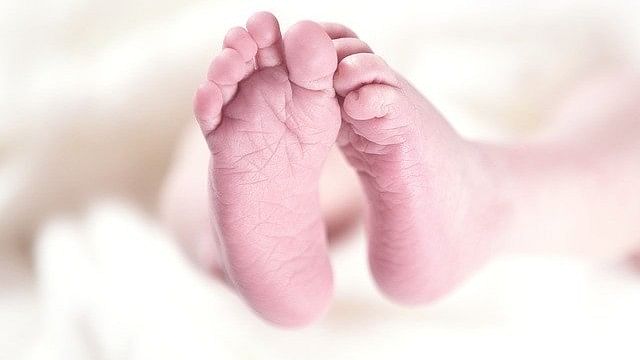
Representative image of a baby.
Credit: iStockPhoto
Hyderabad: Andhra Pradesh government is mulling to bring in legislation that mandates to have more than two children to contest in the local body polls.
The N Chandrababu Naidu government in August had already abolished more than a two-decade-old two-child policy, which disqualifies individuals with more than two children from contesting elections in the state’s rural and urban local bodies.
The government had amended the Andhra Pradesh Municipal Corporation Act-1955, AP Municipalities Act-1965, and AP Panchayat Raj Act-1994 to remove the clauses that prevent individuals with more than two children from contesting in municipal and panchayat elections.
The Naidu government is now advocating for couples to have more children and is considering a law that would only permit those with more than two children to contest in local body elections.
Naidu recently voiced his concerns about what he refers to as the 'demographic crisis', highlighting the decline in childbearing and the potential issues associated with an aging population, citing global examples such as Japan.
With the delimitation process set to commence in a few years and the states below the Vindhyas facing the threat of losing Lok Sabha seats for successfully implementing population control measures, the falling fertility rate, particularly in the southern states, is being seen as a cause for concern.
According to data from the NFHS-5, the total fertility rate (TFR) in Andhra Pradesh stands at 1.70 below the national average of 1.91. The national TFR had also dropped below the replacement level of 2.1.
“The growth rate in the state should increase. Everyone should think about this, and families should aim to have at least two or more children. In the past, I advocated for population control. The need at that time was different. But now we need to increase the birth rate for the future. The state government is planning to bring a law allowing only people with two or more children to contest local body elections,” said Naidu at a meeting in Amaravati last Saturday. He also said that the current population growth deficit of 0.4 pc in Andhra Pradesh, with an average growth rate of 1.6 pc, and continued declines could lead to a demographic crisis similar to those facing Europe, China, and Japan, which are grappling with ageing populations.
According to NFHS-5, the TFR for other southern states, including Telangana, is 1.82, Karnataka is 1.70, Kerala is 1.80, and Tamil Nadu is 1.80.
However, experts pointed out that its implementation is not a straightforward task. Citing English economist and demographer Thomas Malthus's theory, which states that population growth will always tend to outrun the food supply and that humankind cannot improve without strict limits on reproduction, noted political commentator and economist Dr Pentapati Pullarao asserted that improved health infrastructure is a contributing factor to longevity, which coincides with birth control measures that have resulted in an ageing population. He added that although China had reversed its one-child norm, its population was not interested in implementing a multiple-child policy. “China was unable to implement its multiple child policy due to the earlier conditioning of the public,” Dr Pulla Rao told DH.
Senior Congress leader Jairam Ramesh argued that we shouldn't penalize south Indian states for reaching replacement fertility rates.
“South Indian states were pioneers in family planning. The first to reach replacement levels of fertility was Kerala in 1988, followed by Tamil Nadu in 1993, Andhra Pradesh in 2001, and Karnataka in 2005. However, there have been concerns voiced for quite some time now that these successes could end up reducing the political representation of these states in Parliament,” Jairam Ramesh said on X.
He added that in 2001 the Vajpayee government amended the Constitution (Article 82) to make the readjustments in the Lok Sabha dependent on the publication of the first census taken after the year 2026.
“Normally, the first census after 2026 would have meant the census of 2031. But the entire decennial census schedule has been disrupted, and even the census scheduled for 2021 has not been conducted. We now keep hearing that the long-delayed census will start soon. Will this be used for the allocation of seats in the Lok Sabha? There can be no doubt that success should not be penalised. Suitable formulae can be worked out to ensure that this does not happen,” said Ramesh.